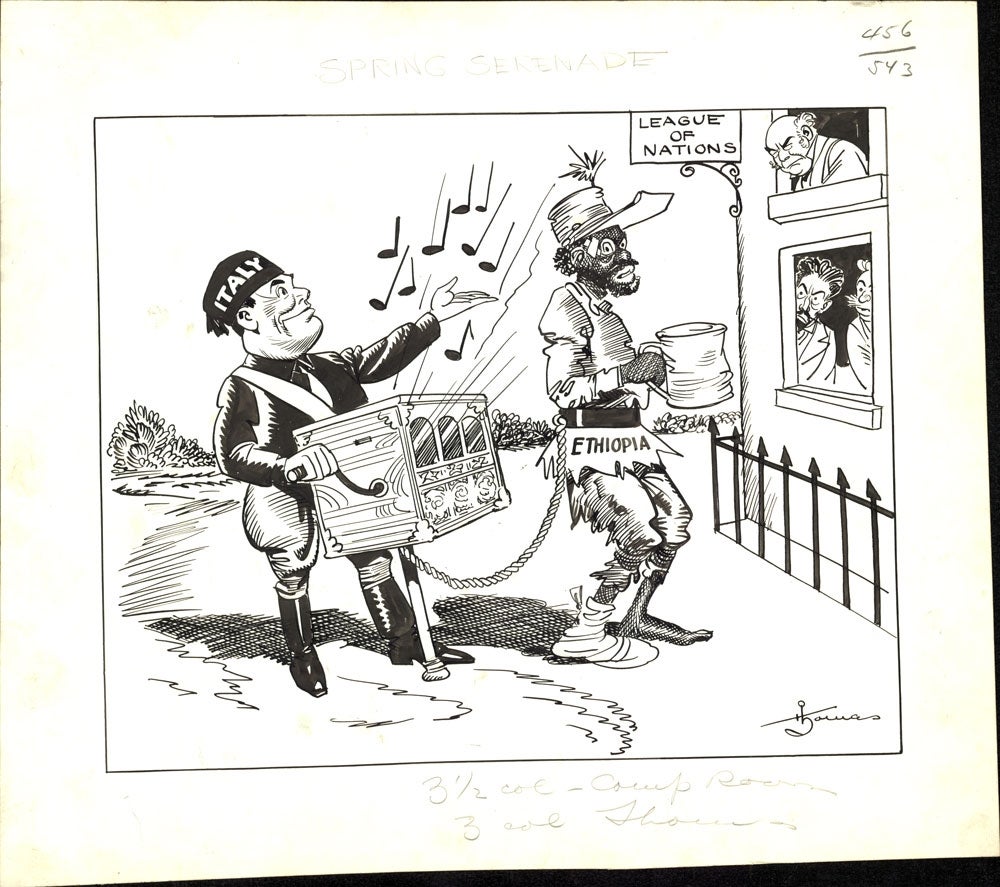
1935.06.12 “Outstretched Hands”
by John Francis Knott (1878-1963)
10 x 15 in., ink on drawing board
Knott started working at The Dallas Morning News in 1905. He drew daily cartoons in the paper during Woodrow Wilson’s first presidential campaign and World War I. Knott’s most famous cartoon character “Old Man Texas” was a champion for government honesty, low taxes and property ownership. It is believed his cartoons supporting American entry into World War I helped increase the sales of Liberty Bonds and donations towards the war effort. In 1957, Knott retired from the News. During his fifty-year career as a cartoonist, he created more than 15,000 cartoons. Knott taught painting in Dallas public schools for almost twenty years.
Many of today’s advanced economies benefited from large-scale debt relief thanks to their 1934 default on war-related debt owed to the US and UK, the two main creditor governments of the time. The amounts were substantial: in France, Greece, and Italy, the war debt relief accounted for 36%, 43%, and 52% of 1934 GDP respectively. These debts were fully written off and the debt largely forgotten.



